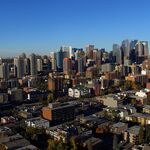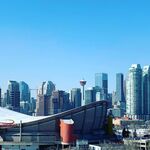I think too much is put into neighbourhoods not being grids. There are numerous examples of areas of cities that are not grids still having density. Calgary likely won't be the exception to that.
I think what is most likely is the inner city ring, and it's built form - main street with shops/restaurants/services, mid-rise apartments at intersections, infills throughout will gradually expand from Hillhurst to Capitol hill, from Bridgeland to Renfrew and so on. It's already happening to a certain extent. The most challenging one is once you get to the 70s-80s suburbs where the roads are no longer grids and lots have front driveway access.
The biggest issue with the 1980s-2000s style developments is not their lack of their grid pattern, but their really spread out nature, almost exclusive single use, and for the most part exclusively car-centric. A grid patten would have addressed some, but not most, of these issues.
Doesn't mean they can't or won't redevelop or densify - just means they have farther to go to get to a more walkable, urban and mixed use condition. Lot's may never be retrofitted to the degree in which they feel walkable, urban or mixed use - maybe that's okay. With each passing year, these areas are watering down their importance as rapid growth continues in the inner city and burbs beyond them, usually with much better designs.
What we will probably see is the medium term for the non-grid neighbourhoods, starting with the oldest and more accessible ones, is spot improvements and corner redevelopment. This would contrast more gridded areas that are experiencing comprehensive redevelopment over a few decades.
The 1980s - 2000s pattern would probably be where we need another development innovation the way semi-attached, followed by townhomes, followed by 6 storey apartments and H-GO stuff has achieved. If the city and development industry could find a scalable way to convert a tired strip mall into a walkable mixed use hubs or find a way to re-urbanize tired, over-built suburban arterials that would be hugely beneficial in these area, while leaving the trickier, less accessible SFH areas to more modestly change.




